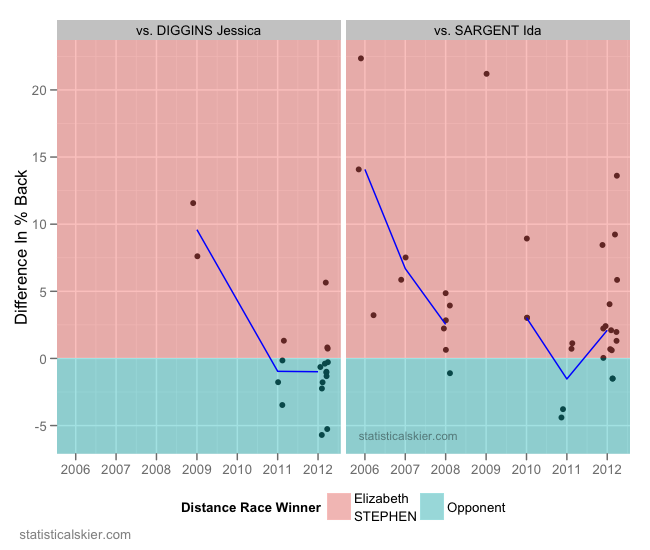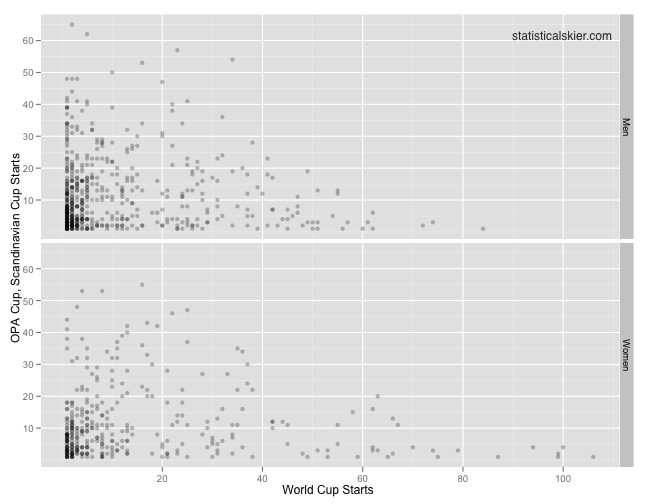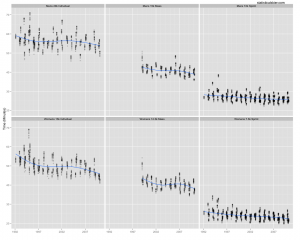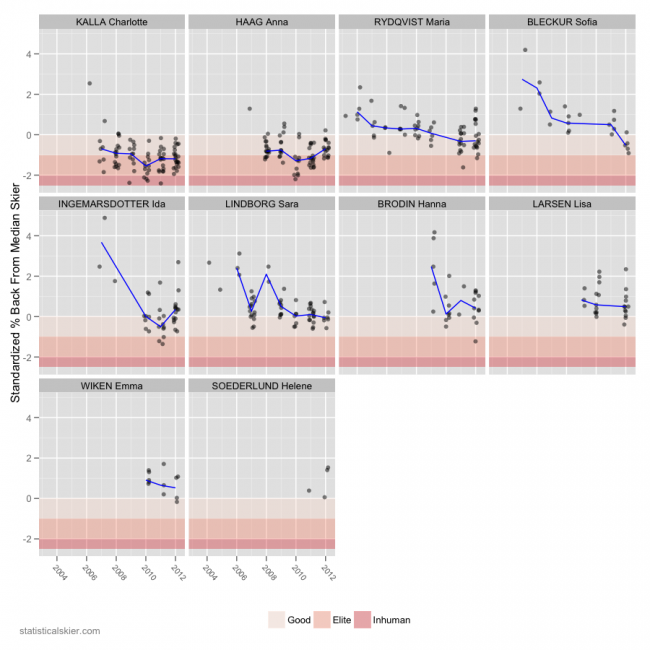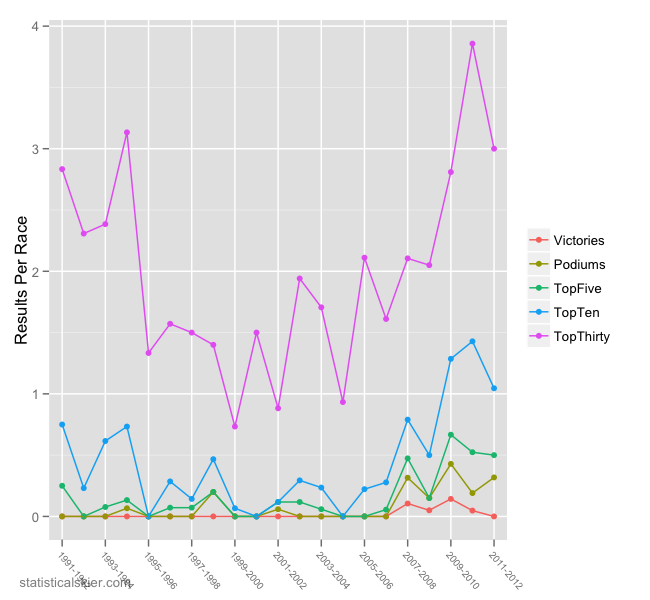Is Petter Northug Serious?
That’s an easy one: probably not. I’m referring, of course, to his recent pronouncements about the upcoming season, in which he claims that he will win 7 World Cups, the Tour de Ski overall title, as well as 3 golds at World Championships.
Obviously, given Northug’s history I’m not inclined to take this too seriously. He likes to make waves from time to time, which is why we love him so. But just for fun, let’s delve a bit into just how impressive a season that would be. As always, all the following comparisons will be for all seasons back to 1992 or so.
In that time, a skier has won at least 7 individual World Cup (sprint or distance) races a total of 15 times. Five times by Bjørgen, twice by each of Kowalczyk, Kuitunen and Skari Martinsen, and once each by Di Centa, Vaelbe, Majdic and…..Petter Northug. (In case you’re wondering, this metric is a little unfair to Bjoern Daehlie, who was in his prime at a time when there were somewhat fewer WC races on the schedule, and for much of that time was basically splitting the victories with Smirnov.)
So there’s at least some precedent for Northug’s 7 WC wins claim. Note that he’s the only male skier on that list!
But the real kicker is actually the three WSC golds. In the modern era (i.e. since 1992), who has won at least three golds at a single major championships (Olympics or WSCs)? That has happened a total of five times, by Bjørgen (of course), but then the list gets a little, shall we say, dubious. They rest are: Myllylae in 1999, Vaelbe in 1997, and then both Lazutina and Smirnov in the somewhat infamous 1995 World Championships.
That suggests, of course, that the only person to do both, win 7 individual WC events as well as 3 golds at a major championships in a single season is Bjørgen. (She did not race in the Tour de Ski that year.) And frankly, that season is shaping up to be a bit of an outlier even for her.
So there you have it. If Northug comes through on his promise, I will be the first to doff my cap…but I wouldn’t bet on it.
Tagged idle speculation, petter northug, World Cup